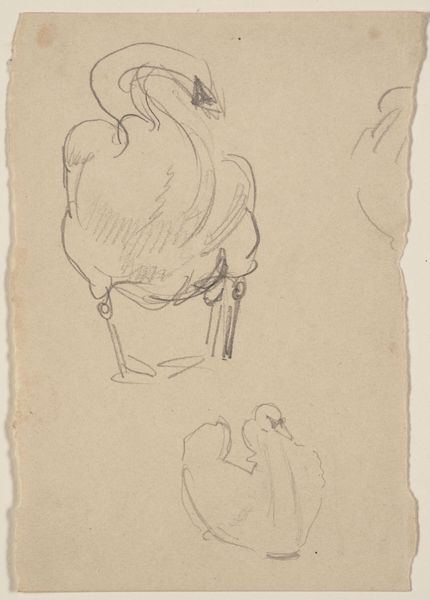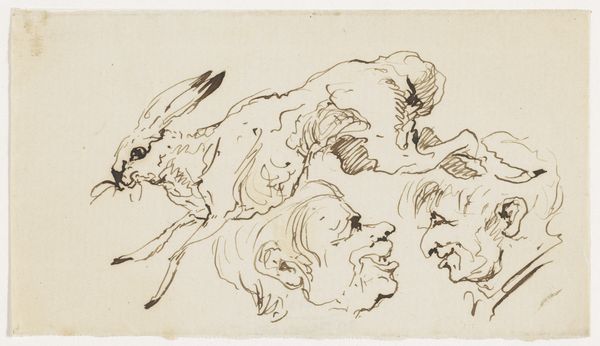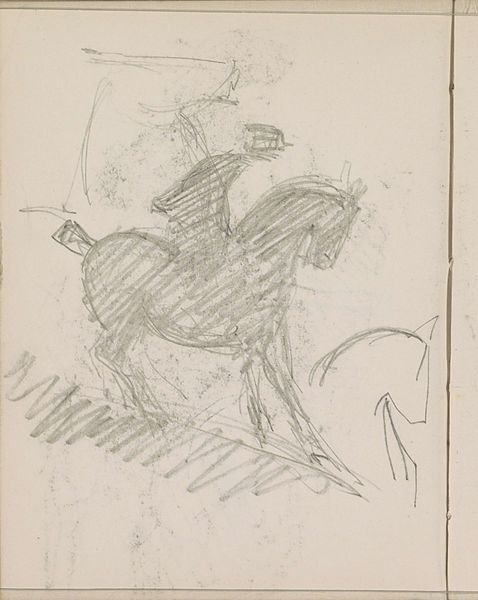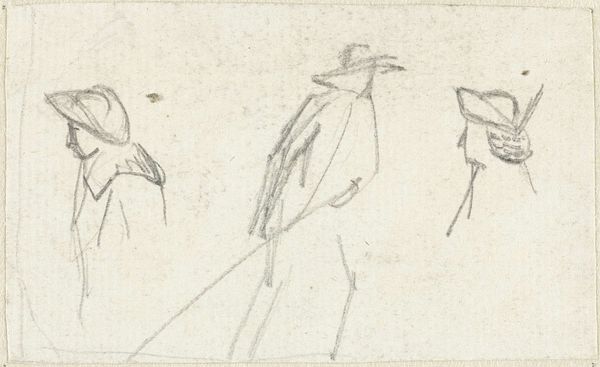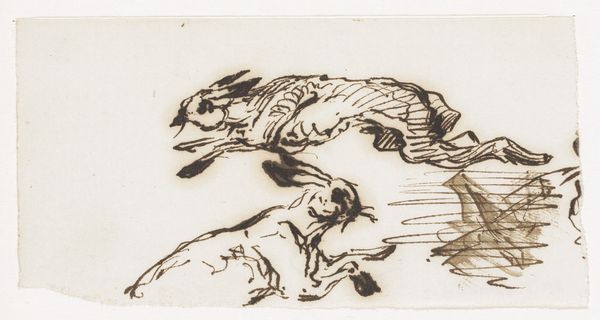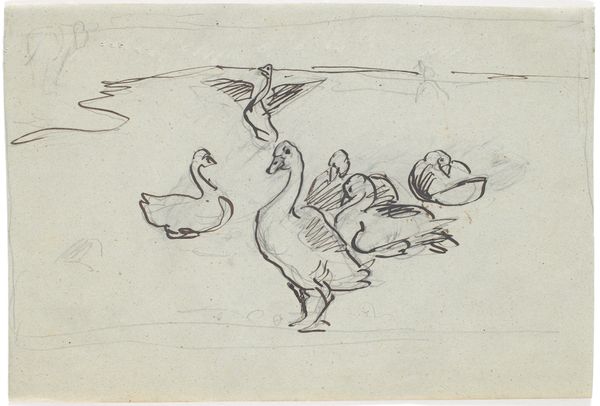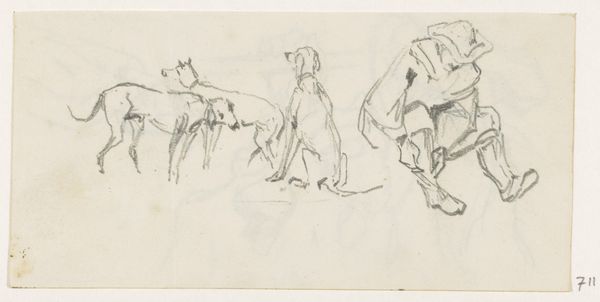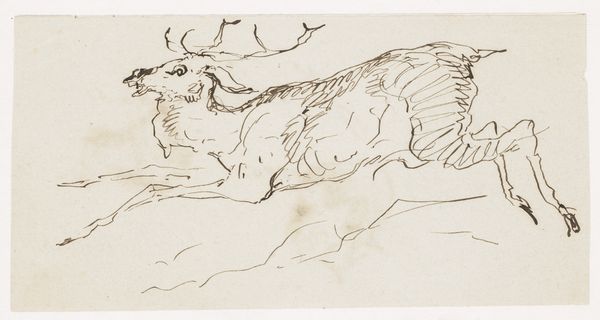
Dimensions: height 80 mm, width 150 mm
Copyright: Rijks Museum: Open Domain
Johannes Tavenraat made this pen drawing of a Eurasian jay and two heads, sometime in the 19th century. As a drawing, it occupies a specific place in the art institution: neither a finished artwork nor a study for a painting, it is a sketch, something in between. The artist has added the classification "Garrulus Glandarius", the Latin name for the bird, and "Vlaamse Gaai", its Dutch name, as if this drawing could be used for ornithological study. But the presence of two human heads makes it clear that this is a work of the imagination as much as observation. Tavenraat lived through a period in which Dutch identity was being renegotiated after French occupation. He was part of the Felix Meritis Society, a progressive institution that promoted the arts and sciences. Looking at the sketch in this context, we can see it as a product of its time, an attempt to reconcile scientific observation with artistic creativity. By researching the artist's life and the institutions he was associated with, we can gain a deeper understanding of this intriguing drawing.
Comments
No comments
Be the first to comment and join the conversation on the ultimate creative platform.
